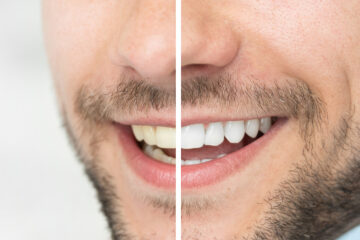Diane 35 is a well-known medication that combines two active ingredients: ethinyl estradiol and cyproterone acetate. Initially developed for the treatment of severe acne, it has gained popularity as a contraceptive and is often prescribed for various hormonal-related conditions. This article explores the uses, mechanisms, benefits, and potential side effects of Diane 35, offering a thorough understanding of this medication.
What is Diane 35?
Diane 35 is an oral contraceptive pill that is classified as a combined hormonal contraceptive (CHC). It contains:
- Ethinyl Estradiol: A synthetic form of estrogen that helps regulate the menstrual cycle and manage hormonal fluctuations.
- Cyproterone Acetate: A synthetic progestogen with anti-androgenic properties, which helps to counteract the effects of male hormones (androgens) that can contribute to conditions such as acne and excessive hair growth (hirsutism).
Diane 35 is commonly prescribed for women who need hormonal regulation for various reasons, including acne treatment, menstrual irregularities, and contraception.
Mechanism of Action
Diane 35 works through several mechanisms:
- Inhibition of Ovulation: The combination of ethinyl estradiol and cyproterone acetate prevents ovulation by inhibiting the secretion of gonadotropins (LH and FSH) from the pituitary gland, thereby reducing the chances of pregnancy.
- Regulation of Menstrual Cycle: By providing consistent levels of hormones, Diane 35 helps regulate the menstrual cycle, leading to more predictable periods and reduced menstrual pain.
- Reduction of Androgens: Cyproterone acetate’s anti-androgenic effects help decrease the levels of male hormones in the body, which can reduce acne and hirsutism.
- Thickening of Cervical Mucus: The medication thickens the cervical mucus, making it more difficult for sperm to enter the uterus, thereby further reducing the likelihood of pregnancy.
Primary Uses of Diane 35
1. Treatment of Severe Acne
Diane 35 is often prescribed for women suffering from moderate to severe acne, particularly when traditional treatments such as topical medications and antibiotics have failed. The anti-androgenic properties of cyproterone acetate reduce sebum production and help prevent clogged pores, leading to clearer skin.
2. Management of Hirsutism
For women experiencing excessive hair growth due to hormonal imbalances, Diane 35 can be an effective treatment option. By lowering androgen levels in the body, it helps to reduce hair growth in areas such as the face, chest, and back.
3. Contraceptive Use
Diane 35 serves as an effective contraceptive method. When taken correctly, it provides a high level of protection against unintended pregnancy. The pill must be taken consistently and at the same time each day to maintain its efficacy.
4. Regulation of Menstrual Cycles
Women with irregular menstrual cycles or those experiencing heavy menstrual bleeding may find relief with Diane 35. The medication helps to normalize cycles, reduce menstrual pain, and alleviate symptoms associated with hormonal fluctuations.
Benefits of Diane 35
- Effective Hormonal Regulation: Diane 35 offers reliable control over hormonal levels, leading to improved skin conditions, regular menstrual cycles, and effective contraception.
- Dual Action: With both contraceptive and therapeutic benefits, Diane 35 addresses multiple issues for women suffering from hormonal imbalances.
- Improved Skin Appearance: Many women experience clearer skin while using Diane 35, thanks to the medication’s anti-androgenic effects.
- Convenience: As an oral contraceptive, Diane 35 is easy to use and does not require any invasive procedures, making it a convenient option for many women.
Potential Side Effects
While Diane 35 is generally safe and effective, it is essential to be aware of potential side effects:
- Nausea and Vomiting: Some women may experience gastrointestinal discomfort, particularly when starting the medication. Taking the pill with food may help alleviate these symptoms.
- Mood Changes: Hormonal contraceptives can affect mood in some individuals, leading to mood swings, anxiety, or depression.
- Breast Tenderness: Some women may experience breast tenderness or enlargement during the initial months of treatment.
- Weight Changes: While some women may notice weight gain, others may experience weight loss. These changes are often due to fluid retention or hormonal fluctuations.
- Risk of Thromboembolic Events: As with any combined hormonal contraceptive, there is a slightly increased risk of blood clots, especially in women with predisposing factors such as obesity, smoking, or a family history of thromboembolic disorders.
- Breakthrough Bleeding: Some women may experience irregular bleeding or spotting, particularly during the first few months of use.
Who Should Use Diane 35?
Diane 35 is typically prescribed for women over the age of 18 who require hormonal treatment for acne, hirsutism, or contraception. However, it may not be suitable for everyone. Women with certain medical conditions should consult their healthcare provider before starting Diane 35, including:
- History of Blood Clots: Women with a history of deep vein thrombosis (DVT) or pulmonary embolism should avoid combined hormonal contraceptives.
- Liver Disease: Diane 35 is contraindicated in women with severe liver impairment.
- Breast Cancer: Women with a history of breast cancer or hormone-sensitive tumors should not use Diane 35.
- Migraines: Women who experience migraines with aura may be advised against using combined hormonal contraceptives.
How to Take Diane 35
For optimal effectiveness, it’s essential to follow the prescribed regimen:
- Dosage: Diane 35 is typically taken as one tablet daily for 21 consecutive days, followed by a 7-day break during which withdrawal bleeding usually occurs.
- Starting the Medication: Women can start taking Diane 35 on the first day of their menstrual cycle or on the first Sunday after their period begins, depending on their healthcare provider’s recommendations.
- Missed Doses: If a dose is missed, it should be taken as soon as remembered. If it is close to the time of the next dose, the missed dose should be skipped. Women should follow the specific instructions provided by their healthcare provider for missed doses.
Lifestyle Considerations
While taking Diane 35, women should be mindful of lifestyle choices that can impact their health:
- Regular Check-ups: It’s essential to have regular check-ups with a healthcare provider to monitor any side effects and assess overall health.
- Healthy Diet and Exercise: Maintaining a balanced diet and engaging in regular physical activity can help manage weight and reduce the risk of complications.
- Avoid Smoking: Smoking increases the risk of thromboembolic events; therefore, women using hormonal contraceptives should avoid smoking or seek help to quit.
Conclusion
Diane 35 is a multifaceted medication that provides effective treatment for various hormonal issues, including severe acne, hirsutism, and irregular menstrual cycles, while also serving as a reliable contraceptive. With its unique combination of ethinyl estradiol and cyproterone acetate, it addresses both the symptoms and underlying hormonal imbalances in women.
As with any medication, it is crucial for individuals to consult with their healthcare providers to determine if Diane 35 is the right choice for their specific needs. By understanding its benefits, side effects, and proper usage, women can make informed decisions about their hormonal health and overall well-being.




